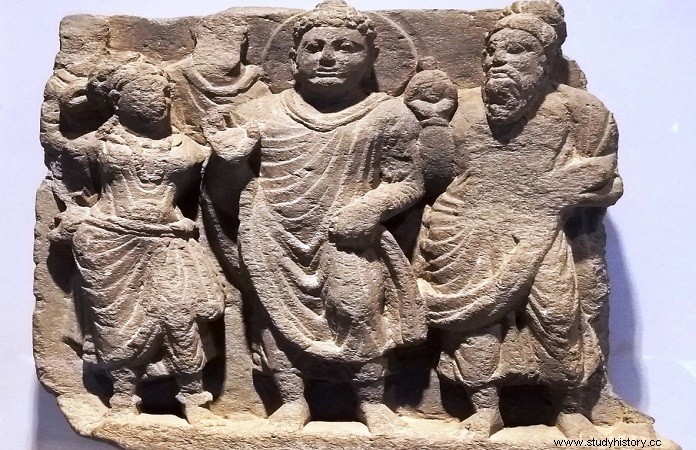
When Buddhism and Jainism arose in opposition to the Vedic religion, the Upanishads tried to save the Vedic religion by opposing the pompous complex rituals and sacrifices. The Upanishads did not dare to be atheistic, but propounded the principles of Nirguna Brahma, Karmavada, Moksha etc. The imperceptible Nirnuna Brahman of the Upanishads was so deep and subtle that only the intelligentsia could gain its knowledge. It was not possible for the general public to understand it.
Due to this the religious aspirations of ordinary people could not be fulfilled. The Upanishads told the means of interview with Brahma, meditation, Nididhyasana and Samadhi for attaining salvation, it was not possible for ordinary people to follow them.
It was not possible for all persons to leave their homes and try to attain Brahman by becoming Parivrajak. Thus the Upanishads could not present any new popular method to the public even after refuting the Yagyas and people were increasingly drawn to Buddhism and Jainism.
Theist Religious Revolution
When the Upanishads almost failed in their efforts and the general public began to turn to Buddhism, the Vedapathians and the Vedantis conceived the Puranic religion to save Hinduism. 600 BC The period from 300 AD is considered to be the infancy period of Puranic religion. This period of 900 years was the era of seeding, germination and flourishing of Bhakti-dominated sects, but due to the predominance of Buddhism and Jainism during this time, the full development of Puranic religion could not take place.
This time limit of 300 AD has been fixed on the basis of records. More than 1500 inscriptions have been found from this period, out of which less than 50 inscriptions belong to Shaivism, Vaishnavism or other sects of Hinduism, while the remaining more than 1450 inscriptions refer to Buddhism and Jainism. With the rise of the Guptas, a new era begins in the religious history of India from the 4th century AD.
From this time the Puranic religion begins to flourish and the Buddhist and Jain religions begin to decline. This process continues till the arrival of the Muslims. This is the reason that the flourishing period of Puranic religion is considered to be from 300 AD to 1200 AD. Puranic religion can be called theistic religious revolution. Later on it got fame as Vaishnavism or Bhagavata religion.
This religious revolution was initiated by Maharishi Valmiki with the creation of Ramayana and Lord Vedavyas with the creation of Mahabharata. Both prepared the ideological ground for this religious revolution by declaring the two Kshatriya princes of North India, Dasharatha Nandan Rama and Yashoda Nandan Krishna, incarnations of the Vedic deity Vishnu. The real leadership of this revolution was later done by the Alvar saints of South India.
During the reign of the Pallavas, Shaiva Acharya Nayanar and Vaishnava Acharya Alvar defeated them by arguing with Buddhist and Jain scholars. This shook the roots of Buddhism and Jainism in the south. The Bhakti movement of the Nayanars and Alvars lasted from the 6th century to the 9th century AD.
Ramananda brought this revolution from South to North India. This stream of religious revolution was completely theist who believed in the supremacy of the Vedas. Later in this stream, two more streams named Shaivism and Shakta Dharma appeared, which gradually went far away from Vedic religion.
Atheists and theists have similarities in religious revolutions
All these theistic and atheist streams of religious revolution had some striking similarities which manifested themselves in the form of exclusive devotion and good conduct towards the hero of their respective religious revolution. Devotion, simple good deeds and good conduct were such paths which were easily followable even to the common man.
